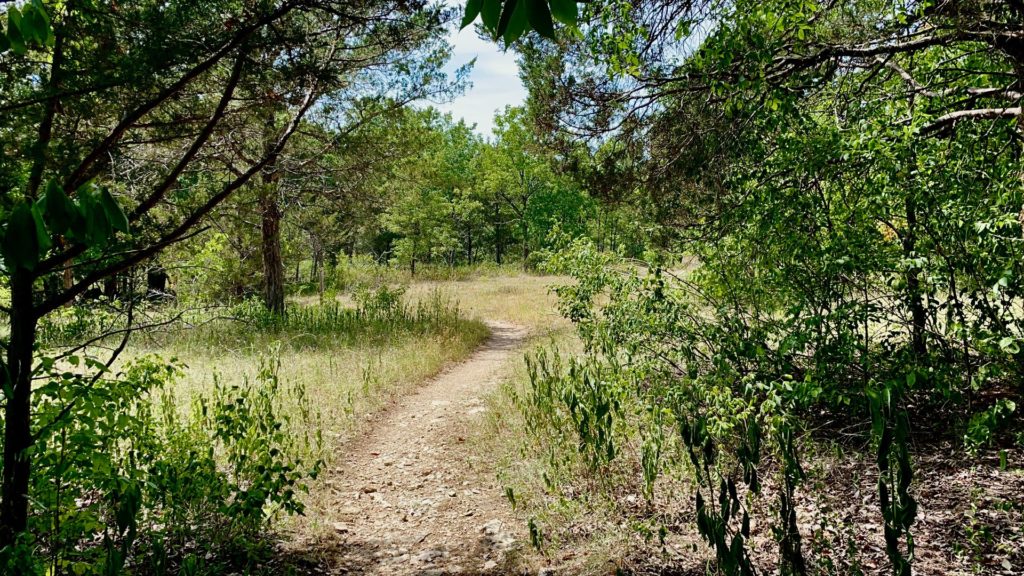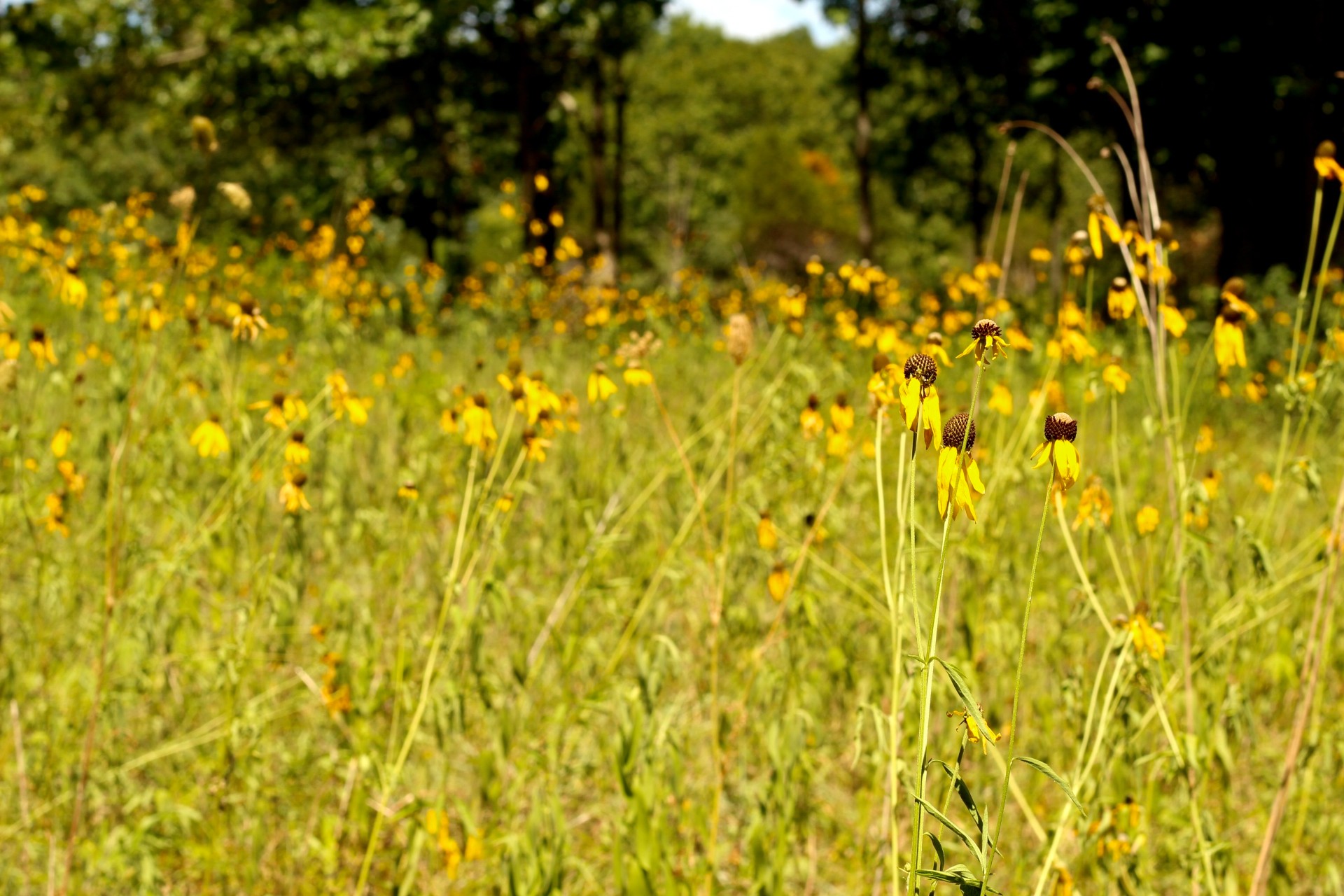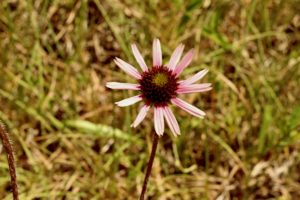
Middle Tennessee can feel like a temperate jungle. Often, trees will sprout up and cover up most spaces if you don’t actively try to keep that from happening. But dotted here and there are rocky, arid spots that are almost like the southern version of a desert. They’re called cedar glades and WPLN’s Nina Cardona recently took an afternoon hike through one in Long Hunter State Park.
Finding a friend
The parking area for the Couchville Cedar Glade is empty when I arrive, so I assume I’m all alone, but not two minutes down the path, I’ve got a buddy. A very young deer, so gangly that it seems all tail and ears, is just a few yards away, just as surprised as me to find company.
The animal looks at me for a moment before bouncing into the strip of trees that extends on one direction. But the trail takes me in a different direction, straight forward to a break in the trees. Just beyond that, there’s a clear space about the size of a house.
Field of gold
No trees can grow here because the bedrock is just an inch or two below the surface. But the things that do grow here are really special. This space is full of waist-high wildflowers with gold petals that flutter in the breeze. They’re dry from this summer’s heat wave, certainly more limp than they might otherwise be, but the effect of being surrounded by the mass of them is impressive.
 Nina Cardona WPLN News
Nina Cardona WPLN NewsThe first open areas on the trail are filled with tall, yellow flowers. While many things cannot survive in the rocky soil of cedar glades, nearly a dozen species are only found in them, several of which are colorful wildflowers.
A different kind of woods
Around the edge of the clearing, most of the trees I see are the Eastern red cedars that give these glades their name. You can recognize them from their stringy bark and pale patches of exposed wood that almost gleam in the light.
 Nina Cardona WPLN News
Nina Cardona WPLN NewsCedars thrive on the calcium from the limestone that’s just under the surface of these glades, but other trees that can survive in the thin soil tend to be somewhat stunted.
One cedar, bigger than the rest, has branches twisting in every direction. It’s the kind of tree that kids almost can’t help but climb (especially if they’ve never gotten covered in sticky sap by trying to scramble up an cedar).
Walking deeper into the wooded sections, I spot some some deciduous trees, too. There are hackberries, post oaks and shagbark hickory, but most are a good deal shorter than you might see another forested places. Overall, these sections of trees are fairly small, too.
Standing in one, it feels like I’m in a little pocket of woods that is, in turn, surrounded by pockets of clear space in every direction. It makes these woods feel very different from other forested areas. There’s a different quality of light. There’s more light. At moments it almost feels as if the air around me is glowing a little, from the way light both filters through the green leaves and sparkles in through openings between trees.
Wide open spaces
A few minutes later, I walk into an open area that’s way more than just a pocket, and I discover why the Couchville Cedar Glade is so special. This clearing is huge, at least the size of a football field. There’s even less soil here, and the vegetation is much shorter. A scrubby, patchy layer of some kind of grass barely covers the nearly exposed stretches of stone.
 Every now and then, I see a plant that once was thought to be extinct, one that pretty much only grows in these glades. The Tennessee Purple Coneflowers stand a little over a foot tall, and they actually seem to thrive in this dry summer.
Every now and then, I see a plant that once was thought to be extinct, one that pretty much only grows in these glades. The Tennessee Purple Coneflowers stand a little over a foot tall, and they actually seem to thrive in this dry summer.
The cedar glades themselves are an endangered kind of habitat. People find it really tempting to either dump lots of soil on top or blast away some of this rock to make it more usable. So I mentally say a little thank you to whoever decided to preserve this one.
And then I keep wandering down the trail into another thicket of stringy-barked cedars.
 Nina Cardona WPLN News
Nina Cardona WPLN NewsThis large clearing in the Couchville glade has a large expanse of nearly uncovered bedrock.
.

